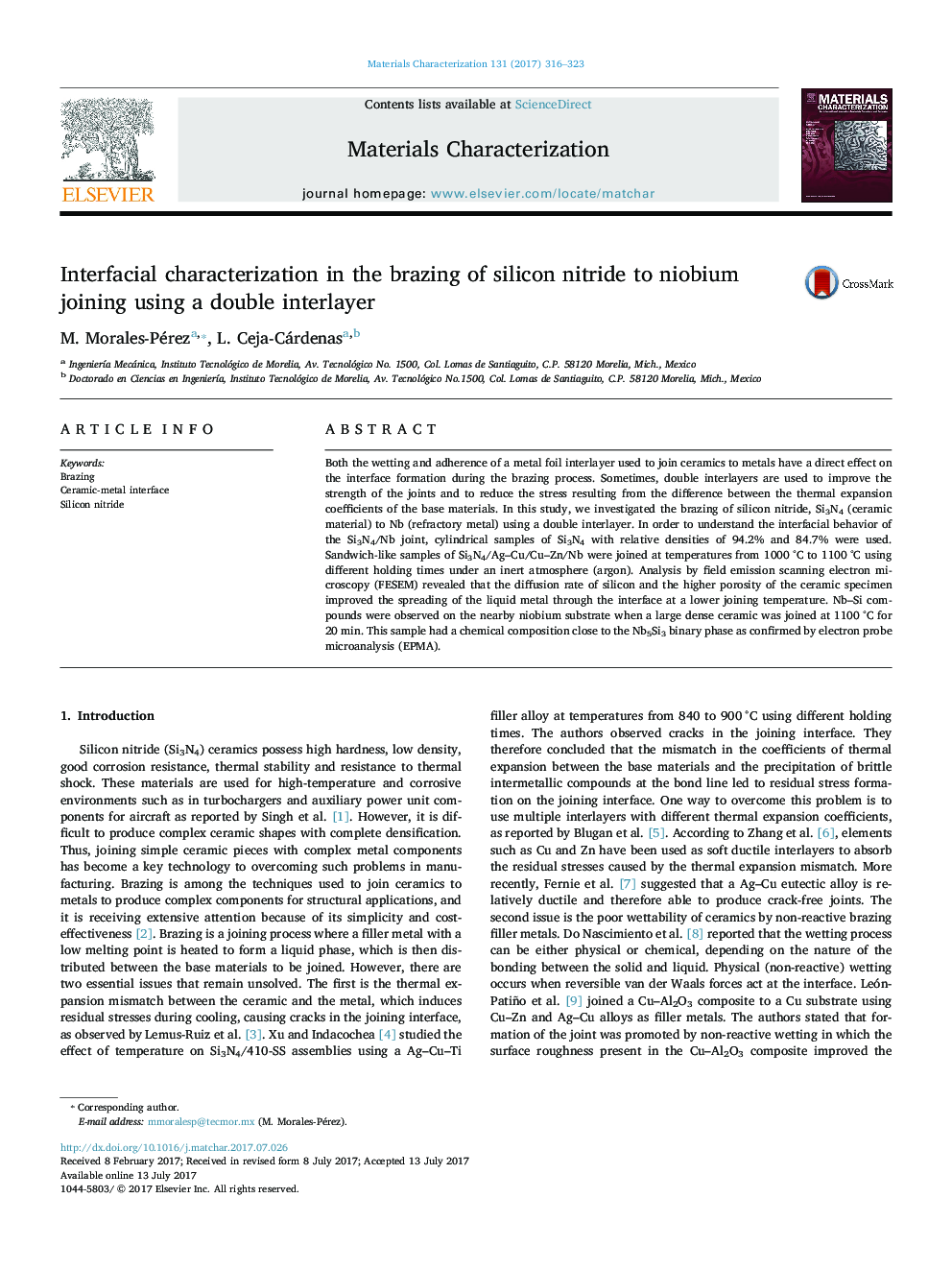| Article ID | Journal | Published Year | Pages | File Type |
|---|---|---|---|---|
| 5454598 | Materials Characterization | 2017 | 8 Pages |
Abstract
Both the wetting and adherence of a metal foil interlayer used to join ceramics to metals have a direct effect on the interface formation during the brazing process. Sometimes, double interlayers are used to improve the strength of the joints and to reduce the stress resulting from the difference between the thermal expansion coefficients of the base materials. In this study, we investigated the brazing of silicon nitride, Si3N4 (ceramic material) to Nb (refractory metal) using a double interlayer. In order to understand the interfacial behavior of the Si3N4/Nb joint, cylindrical samples of Si3N4 with relative densities of 94.2% and 84.7% were used. Sandwich-like samples of Si3N4/Ag-Cu/Cu-Zn/Nb were joined at temperatures from 1000 °C to 1100 °C using different holding times under an inert atmosphere (argon). Analysis by field emission scanning electron microscopy (FESEM) revealed that the diffusion rate of silicon and the higher porosity of the ceramic specimen improved the spreading of the liquid metal through the interface at a lower joining temperature. Nb-Si compounds were observed on the nearby niobium substrate when a large dense ceramic was joined at 1100 °C for 20 min. This sample had a chemical composition close to the Nb5Si3 binary phase as confirmed by electron probe microanalysis (EPMA).
Keywords
Related Topics
Physical Sciences and Engineering
Materials Science
Materials Science (General)
Authors
M. Morales-Pérez, L. Ceja-Cárdenas,
